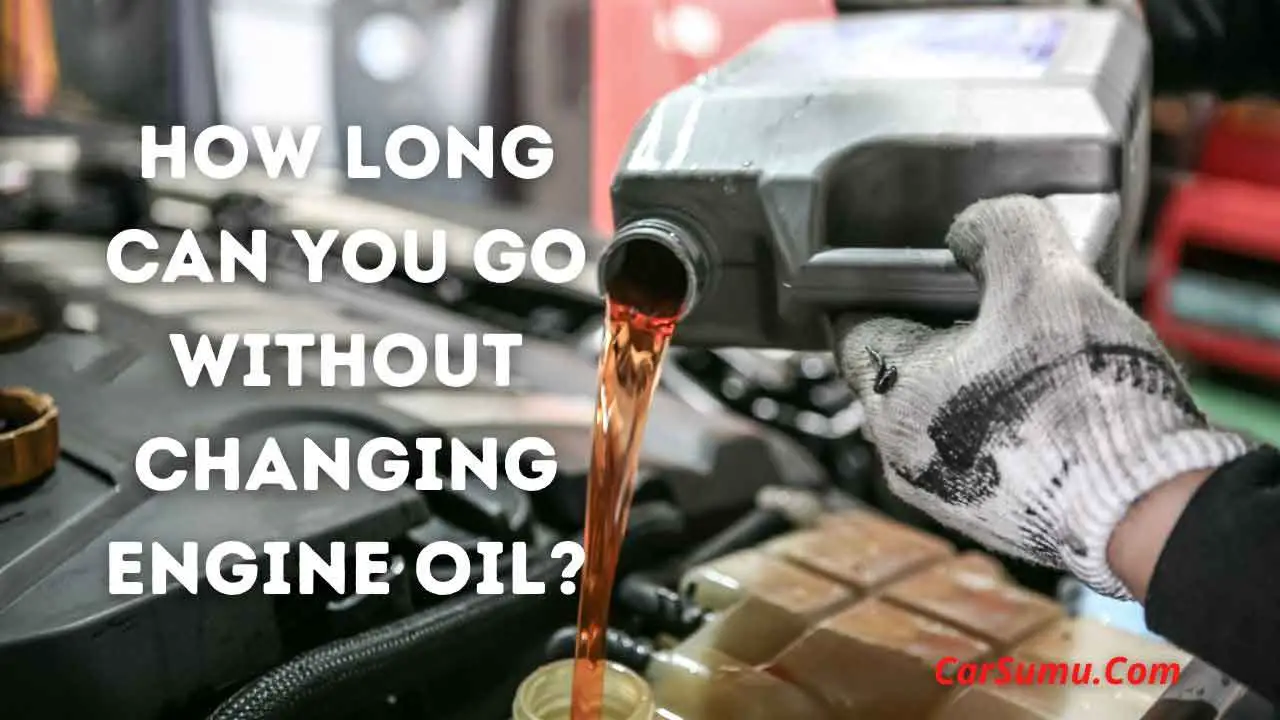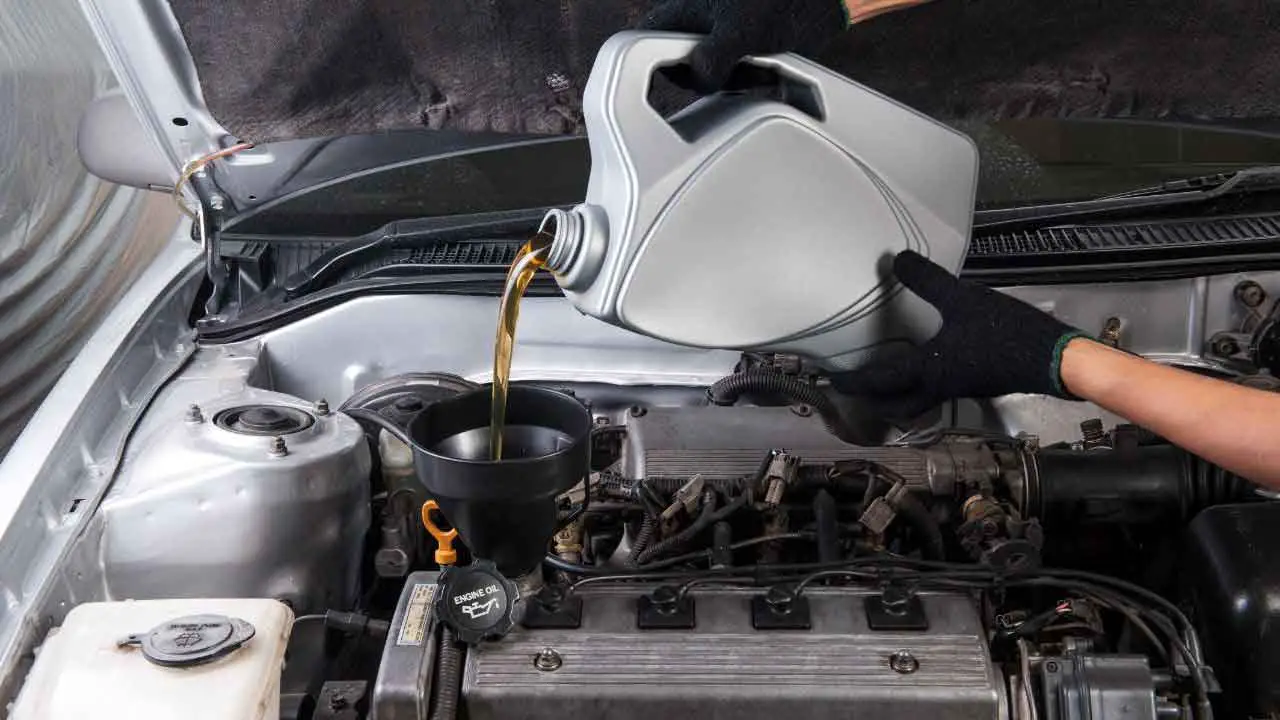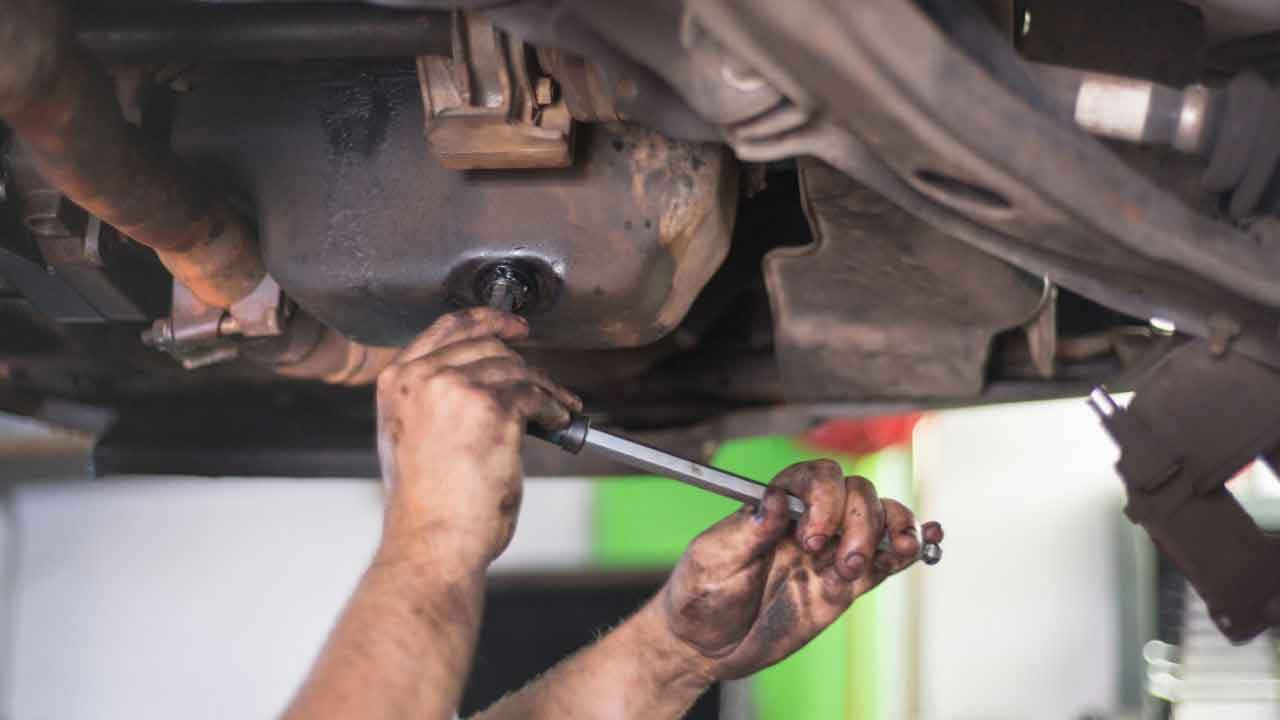Changing engine oil is an integral part of the scheduled maintenance work of a vehicle.

Engine oil keeps the engine safe and smoothly running while keeping the heat and dust away.
In this article, we have covered the whole ‘engine oil change’ topic and tried to answer almost all the questions that may pop up in your mind.
The article contains some interesting research data about oil change, answers to the questions like- how often should you change engine oil, what happens if you don’t change them and the symptoms that can show up for not changing engine oil and many more. Stay with us!
Research Data About Engine Oil
We have collected data from auto repair shops and car owners and found these interesting facts about engine oil change-
- Most modern cars require an engine oil change at an interval of six months or 5000 to 8000 miles, whichever comes first.
- Old car models require an engine oil change every 3000 miles for optimal performance.
- 9 out of 10 engines that are damaged because of ran out engine oil becomes irreparable and requires engine replacement.
- Checking the oil every month and changing it at regular intervals make the engine 37% more long-lasting than the others not regular in maintenance.
What is Oil Change?
Oil change means replacing the old engine oil with a brand new one. Apart from the engine, there are other parts of the vehicle as well where fluid change is needed for proper lubrication and preventing damage.

Why Do I Need to Change My Vehicle’s Oil?
When you drive a vehicle, there are hundreds of things in your vehicle that moves continuously to run it. Continuously moving back and forth can wear out the parts within moments. To run the engine without harming the moving parts, it is necessary to use lubricants.
Lubricants make the movement of the parts smooth and protect them from wearing out. However, as the lubricants get trapped into a very hot condition inside the engine, brakes or transmission, the lubricants burn out after a certain period of time.
As the burnt oil does not lubricate the parts like before and they can become contaminated over time, it is necessary to change the oil after a certain period to protect engine parts.
What are the Benefits of Oil Change?
Apart from keeping your engine safe from getting damaged, there are other benefits of oil change as well. Here is a brief discussion on the benefits of oil change-
1. Engine Remains Clean
In the process of driving the vehicle, the engine collects dust and debris from the environment and other parts of your vehicle through linked parts.
Dust accumulates at the lower part of your engine with the oil when the engine is cold. But when you run the engine, with the moving parts of your engine and the lubricants, dust flow from one part to another of your engine.
In this process, sand or other hard minerals lowers the lubrication by frictions. But when you drain the engine oil regularly, dust does not get enough time to accumulate in a place. dust also gets drained out with the engine oil making your engine clean.
2. Engine Lasts Long
With regular engine maintenance, especially changing the oil regularly maintaining sufficient lubrication inside the engine makes the engine durable and long lasting.
Friction is the enemy of the engine and when you eliminate friction from the engine with enough lubrication, it will serve you for years without any major problem.
3. Engine Parts Remain Safe
As we have been talking about this for a while, you should have already guessed what I am going to discuss here. Yes, with the elimination of friction, tiny parts of the engine remain safe and sound.
As the engine is a big block of small parts, they need proper maintenance to run properly. And the best maintenance of the engine is to keep it enough lubricated with good oil and preventing it from overheating.
4. Improves Mileage
You may have been asking yourself, how can oil change improve fuel economy? The trick behind this is the same, reducing friction.
With no friction, your engine will run smoothly and effortlessly making the best use of the fuel injected into the combustion chamber.
5. Smooth Engine Performance
Because engine oil makes the movement of the engine parts smooth and without friction, the engine performs without overheating. So, you will get a smooth engine performance after changing the old engine oil with new.
6. Reduces Emission
Another great thing that happens with regular engine oil change is the reduction of exhaust emission. Because the engine will perform better without any malfunction, you will have a worry free emission test all the time.

How to Get Oil Changed Regularly?
I have found a significant amount of questions regarding- how do I remember the oil change schedule? so, here is a little trick for that-
The best way to change the oil regularly is by making a reminder in your phone’s calendar app. Set a reminder to check the engine oil once a month. So, when the day comes, your phone will remind you about the inspection.
Doing this will relieve you from stressing about engine oil now and then.
Apart from checking the engine oil regularly, you need to follow the owner’s manual to change the oil. Depending on the model you are using, you may need to change the engine oil every 3000 to 6000 miles of usage.
For doing an accurate calculation of how many miles you have driven with the new oil, note down the odometer reading of the moment you have changed the oil. Put a sticker or a sticky note containing the last oil change date and odometer reading on the windshield corner or dashboard.
How Long Can You Go Without an Oil Change?
This depends on various factors like what is the condition of your vehicle, how many miles in it, how rough you have driven, and what was the temperature in the engine.
Roughly, you can go up to 5 to 7 thousand miles without changing non-synthetic oil. On the other hand, full synthetic oil can give you an extra 3 to 5 thousand miles before it becomes mandatory to change the oil.
Here are some of the renowned auto manufacturer’s interval between two oil changes-
|
Brand |
Oil Change Interval |
|---|---|
|
Toyota |
5000 miles or 6 months |
|
Mazda |
8000 miles or 6 months |
|
Honda |
7500 miles or 1 year |
|
Ford |
7500 miles or 6 month |
|
Chevrolet |
5000 miles or 6 months |
Between the miles and months, always consider the one that comes first. For example, you have driven 5000 miles in your Toyota within 3 months, you need to change the oil as soon as it hits around 5000 miles.
IMPORTANT: The numbers here are based on some popular models from these companies. You shouldn’t rely on these to schedule your vehicle’s maintenance as the intervals can differ model to model. You must check the owner’s manual for getting the specific data about your car.
What Happens if I Skip an Oil Change?
The ultimate result of skipping an oil change is engine failure.
Oil makes the engine parts lubricated to eliminate friction, makes a protective layer around the parts to draw the heat away from the engine.
With the circulation of the oil inside the engine, it becomes dirty, transforms to sludge slowly because of the oxidation and eventually, becomes ineffective.
If you leave that ineffective and sludgy oil in the engine, it becomes thicker and can’t eliminate friction like it used to do.
The oil filter also clogs up after serving you for a certain period and your fuel pump will get a really hard time pushing the fuel to the combustion chamber.
At some point, the engine will completely dry out. The friction among parts will generate massive heat inside the engine to wear out them fast and finally, your engine will stop working.

When Should I Have Regular Maintenance Done On My Car?
You should inspect your car for any visible leak or malfunction every month. A gross inspection without any tools only requires 15 minutes and can save you hundreds of bucks.
Apart from regular bare eye inspection, you should see the owner’s manual to know details about the manufacturer’s recommended maintenance schedules. We highly recommend following the owner’s manual for every step taken for your car so that the vehicle remains in good shape for years to come.
Some new models come with different types of maintenance recommendations for normal daily driving and severe driving. Generally, the interval between two oil changes is longer in normal driving than the severe driving.
However, severe driving does not mean rough driving. When we talk about severe driving, we refer to frequent short distance trips, driving in high traffic areas where you need frequent stop and go, driving with a heavy load or in extreme weather conditions.

Factors that Determine How Often Oil Changes are Necessary
There are hundreds of factors that are related to oil conditions. How old is your vehicle, what are the technologies it is equipped with, what is the oil you used, weather condition of your region, your engine condition, cooling mechanism and many other factors determine how often you should change the oil.
As a car owner, it is not reasonable to check all these factors and get into a conclusion.
So, we recommend an easy solution. Check the oil level and the color every month and change it when it gets dark or hits 3 to 8 thousand miles, depending on the model.
What happens if you don’t get an oil change for a long time?
Engine oil will burn out, transform into sludge consisting of dust particles, and become incapable to maintain enough lubrication inside the engine leaving it to get hot and seize.
And guess what! seized engines are not repairable and require replacement.
How long should an oil change take?
An oil change is a four step work. Lifting the vehicle, draining the old lubricant by unplugging the drain bolt, replacing the old oil filter with a new one, and adding new oil to the engine.
For the people doing this for the first time, it can take around half an hour to complete the task. After you get used to it, it should not take more than 15 minutes to complete the whole process perfectly.
Oil Change vs Oil Flush
The oil change is simply draining the old oil and adding new oil to the engine. On the other hand, oil flush or engine flush is using an additive to break down carbon deposits and dust from the engine parts to clean things up inside the engine.
However, in most of the cases, engine flush does not work as described by the additive manufacturers.

Symptoms that Show Up When You Need an Urgent Oil Change
It is highly recommended that you change the engine oil before any symptoms appear. Symptoms appear because of malfunction in the system and that correlates with engine damage in most of the cases. However, here are some of the key symptoms that may appear when you need an urgent oil change-
1. Burning Oil Smell
If you feel burning oil smell from the driving seat while driving, this is either because of burn out engine oil or your transmission is running out of fluid.
Either way, you need to respond promptly to prevent damage to the vehicle that can lead to a very costly repair.
2. Check Engine Light
The second thing that may happen is the check engine light may turn on. Well, the check engine light of your vehicle can turn on for thousands of reasons, and some of which relates to the engine oil.
So, use an OBD 2 scanner to read the data from the vehicle computer system and act accordingly.
3. Oil Life Monitoring Light
If you own a modern car and it is equipped with an oil life monitoring system, then an illuminated oil life monitor light is a clear sign that the engine oil is not flowing correctly.
Although this might not always need you to change the engine oil, the symptom can appear because of a lack of engine oil or burnt-out oil.
4. Engine Overheating
The engine can overheat for many things. From bad cooling mechanism to burnt-out engine oil.
If you see the engine is overheating or smoke coming out of the hood, stop driving and remove the dipstick to check the engine oil.
5. Grinding or Cranking Noise
This will happen in the most dangerous situation when the engine oil run out fully or become sludge. If you experience this, stop the engine immediately and check your engine oil.
If the engine oil is good, then this may be a transmission fluid problem.
Final Thoughts
As you have already read the whole article, you know a lot about oil change.
We recommend reading the scheduled maintenance section of your vehicle’s owner’s manual so that you get the exact interval to follow between two oil changes and which oil to use in your engine.